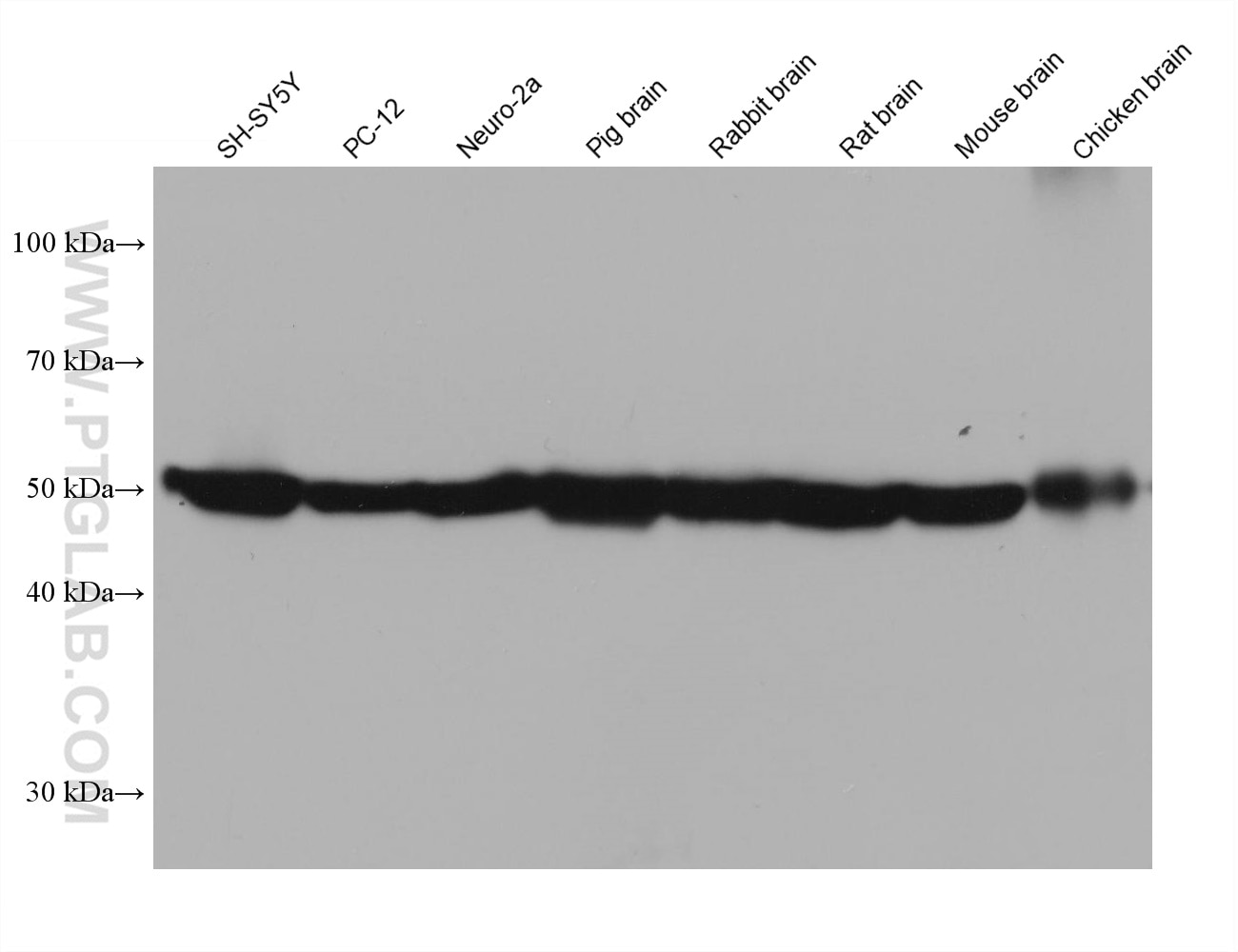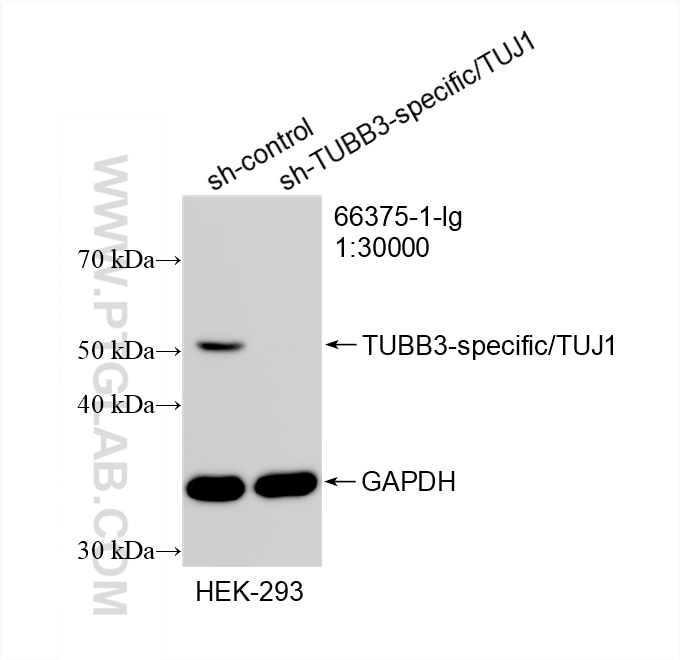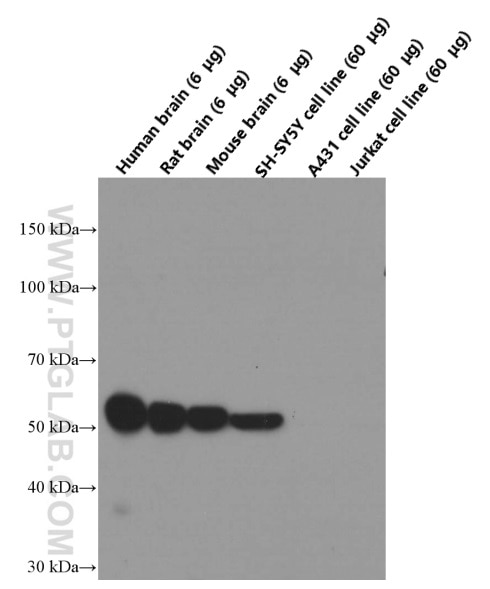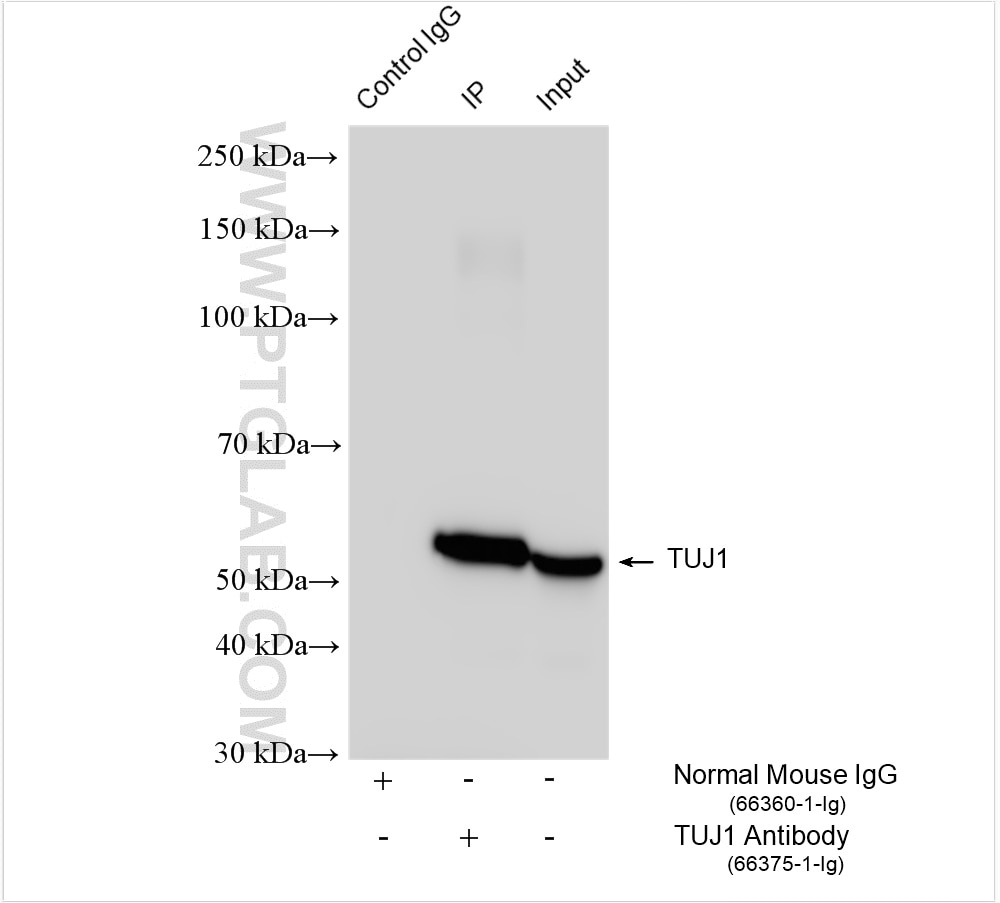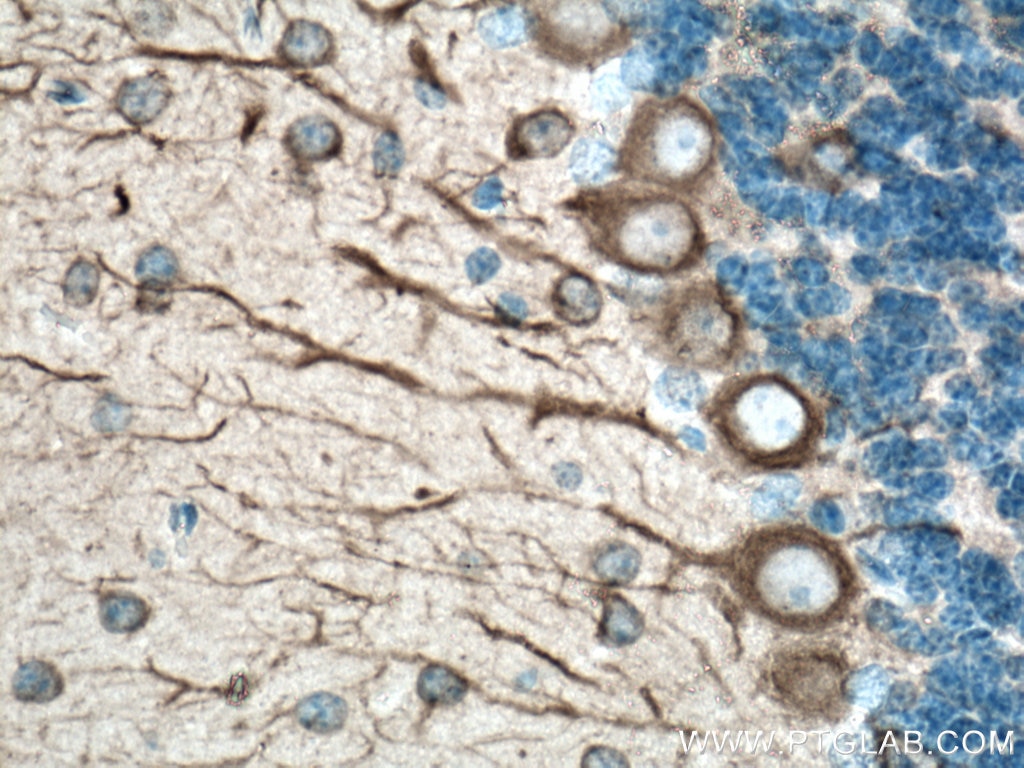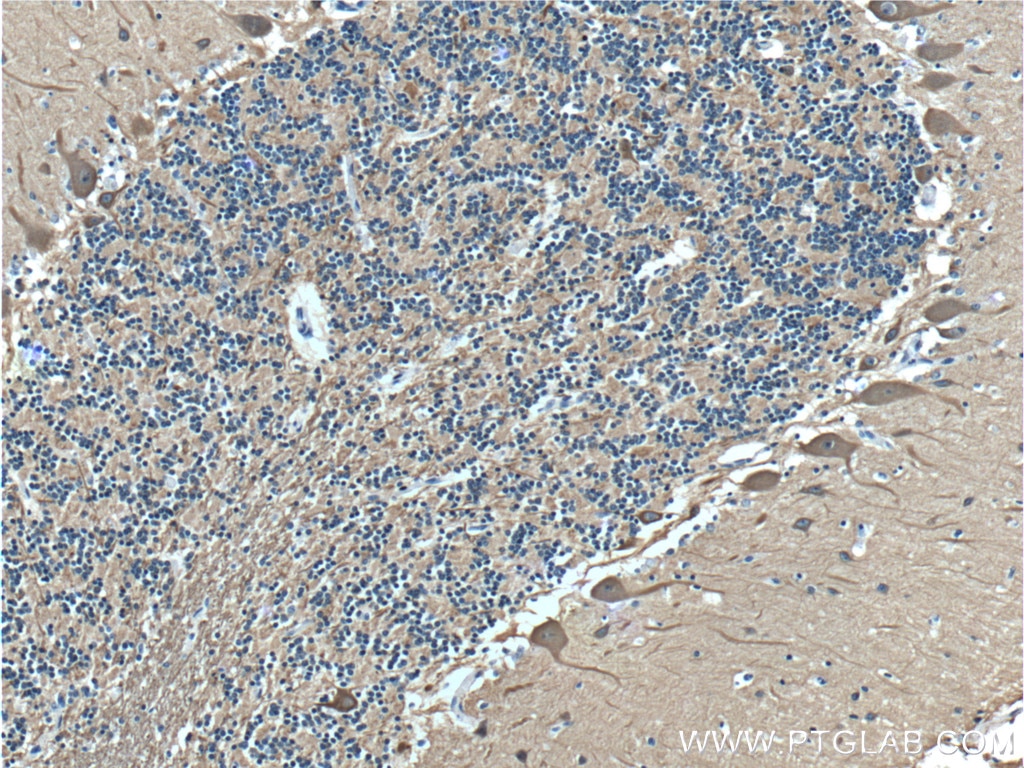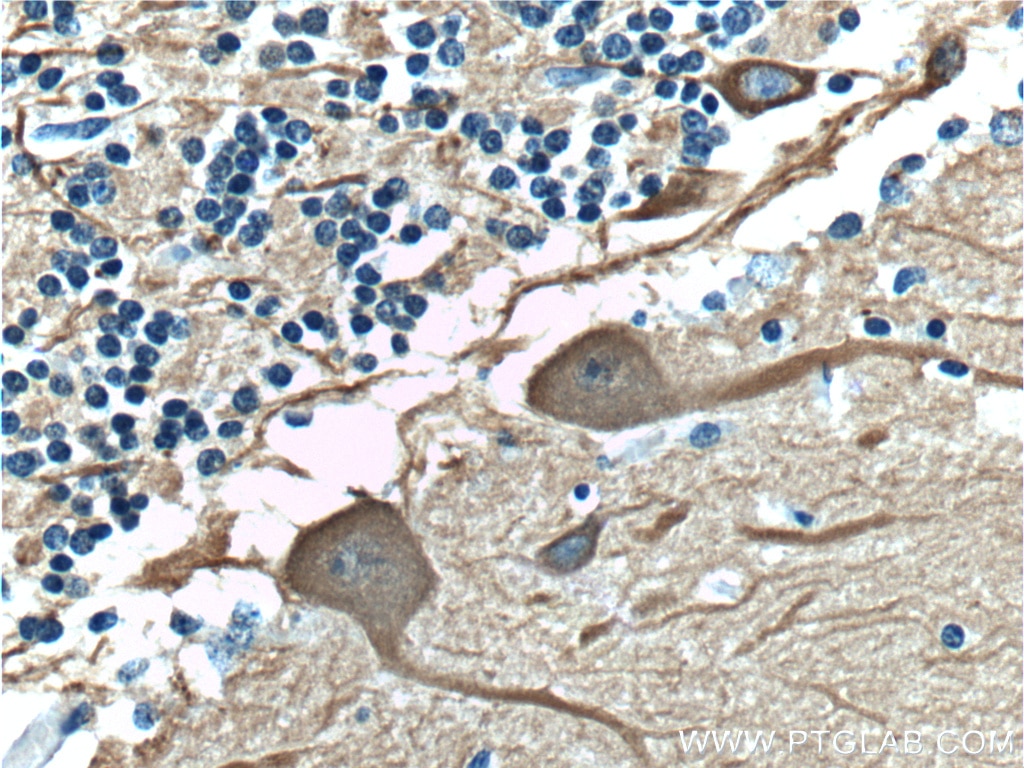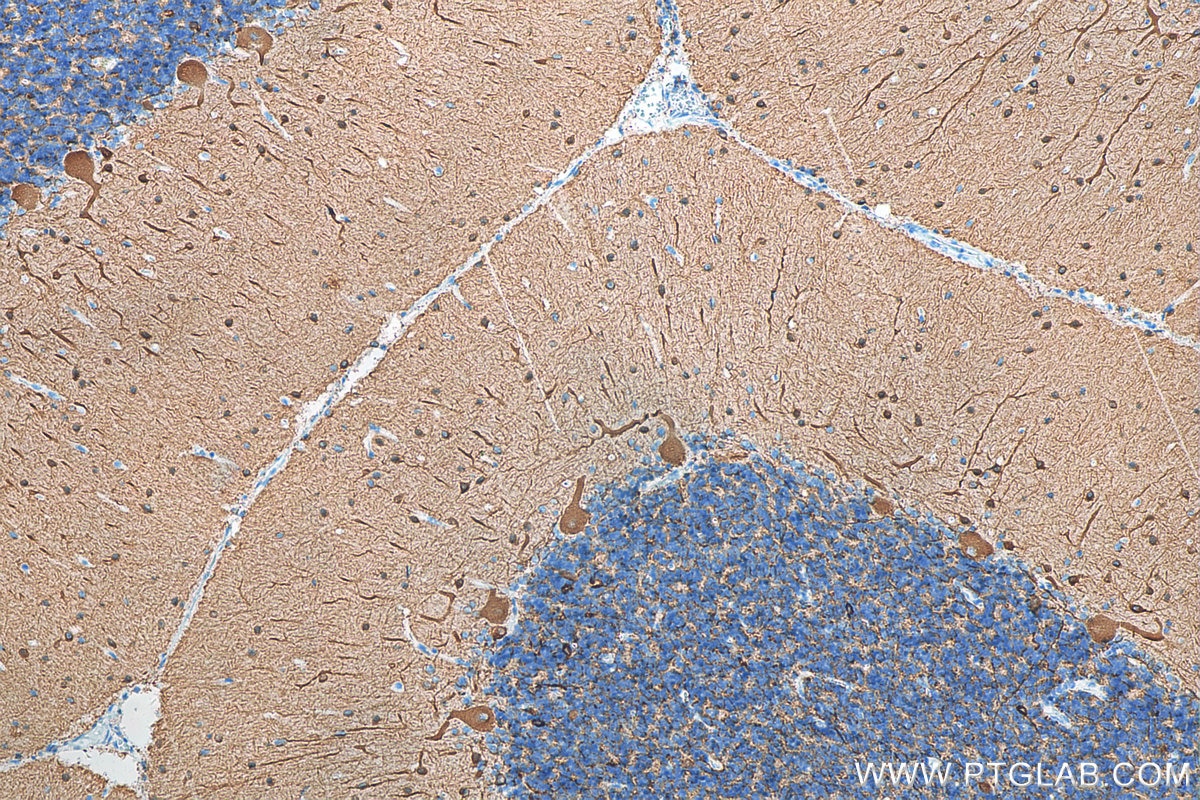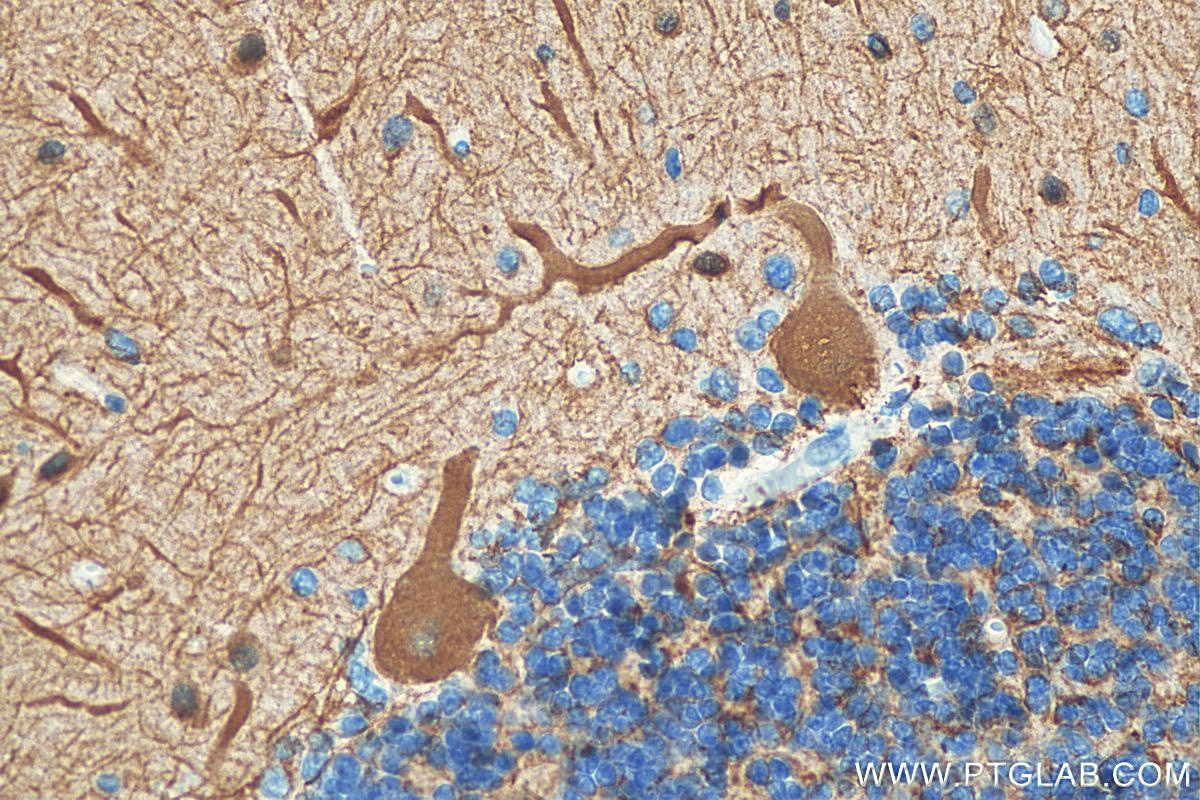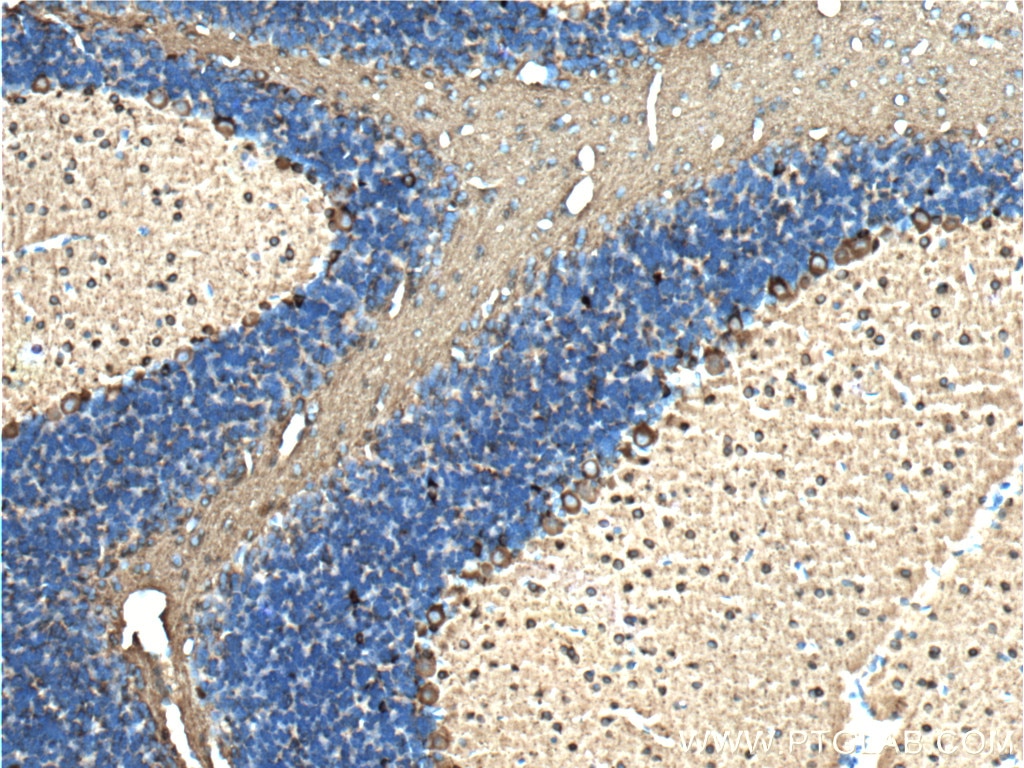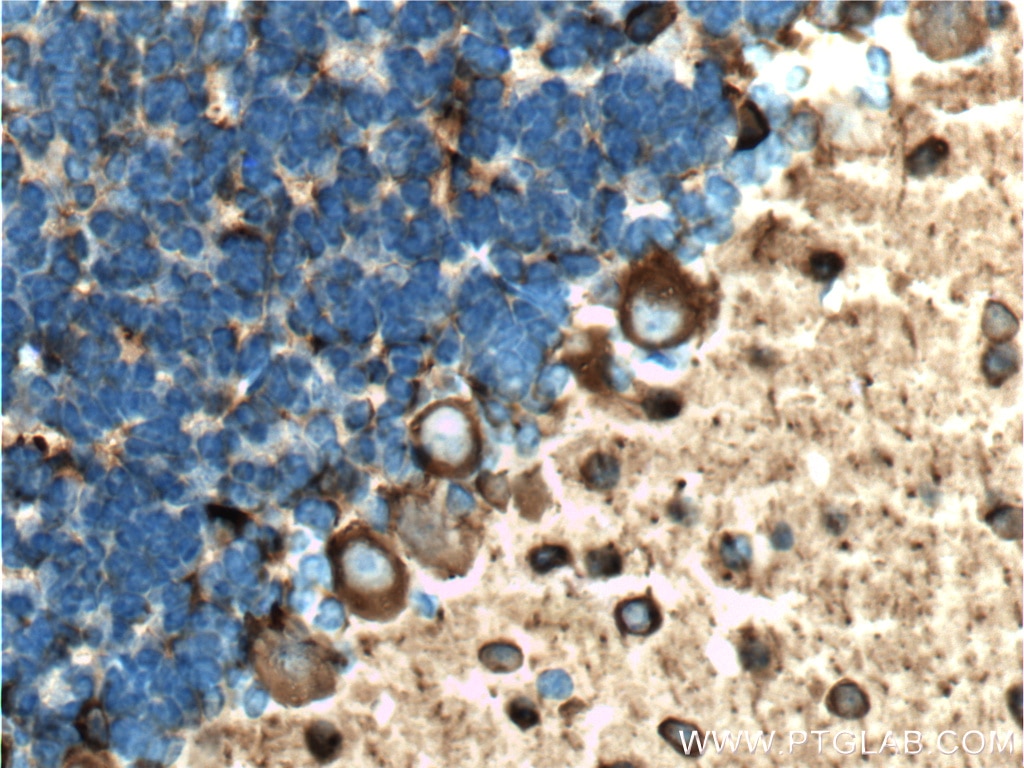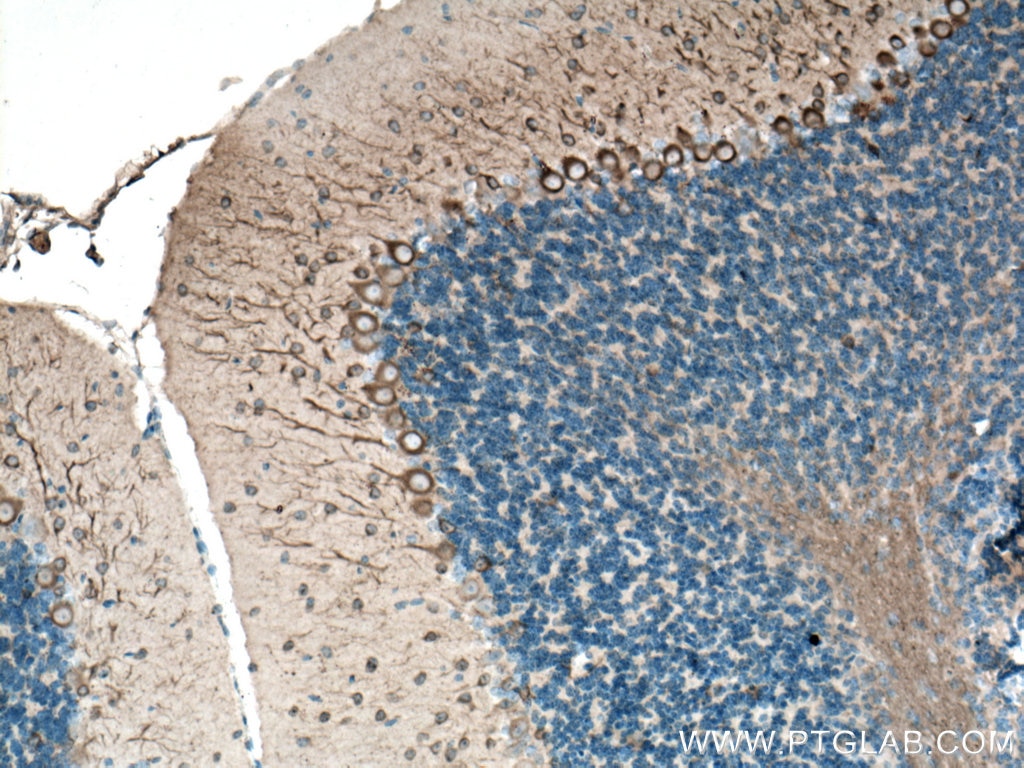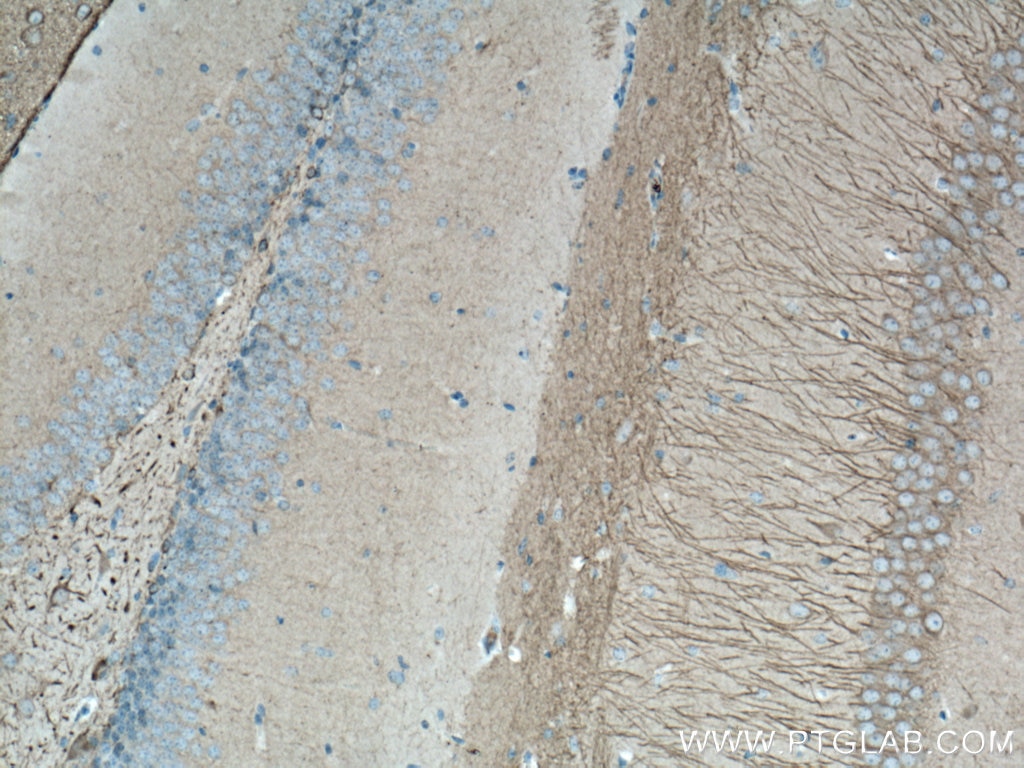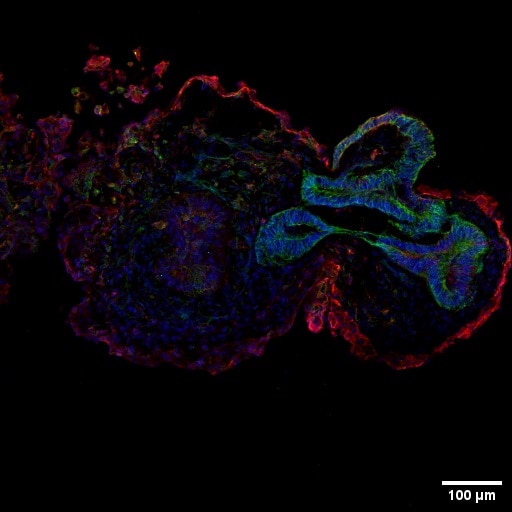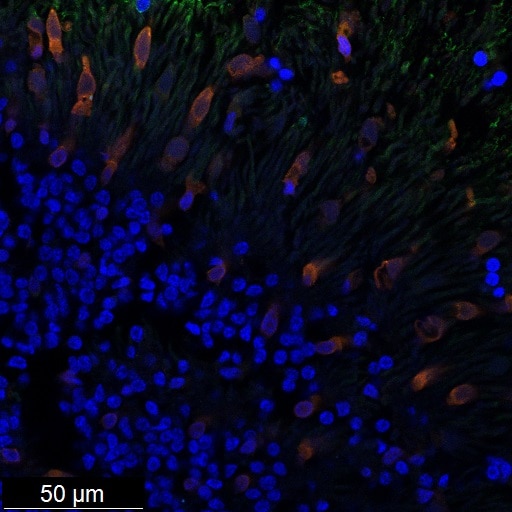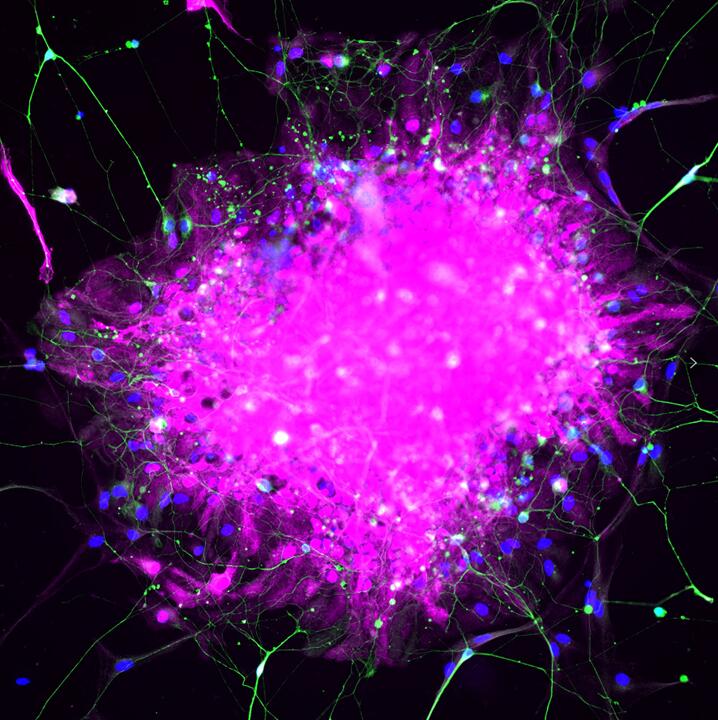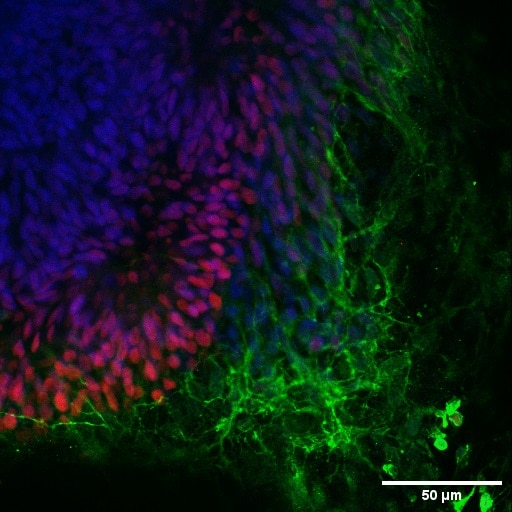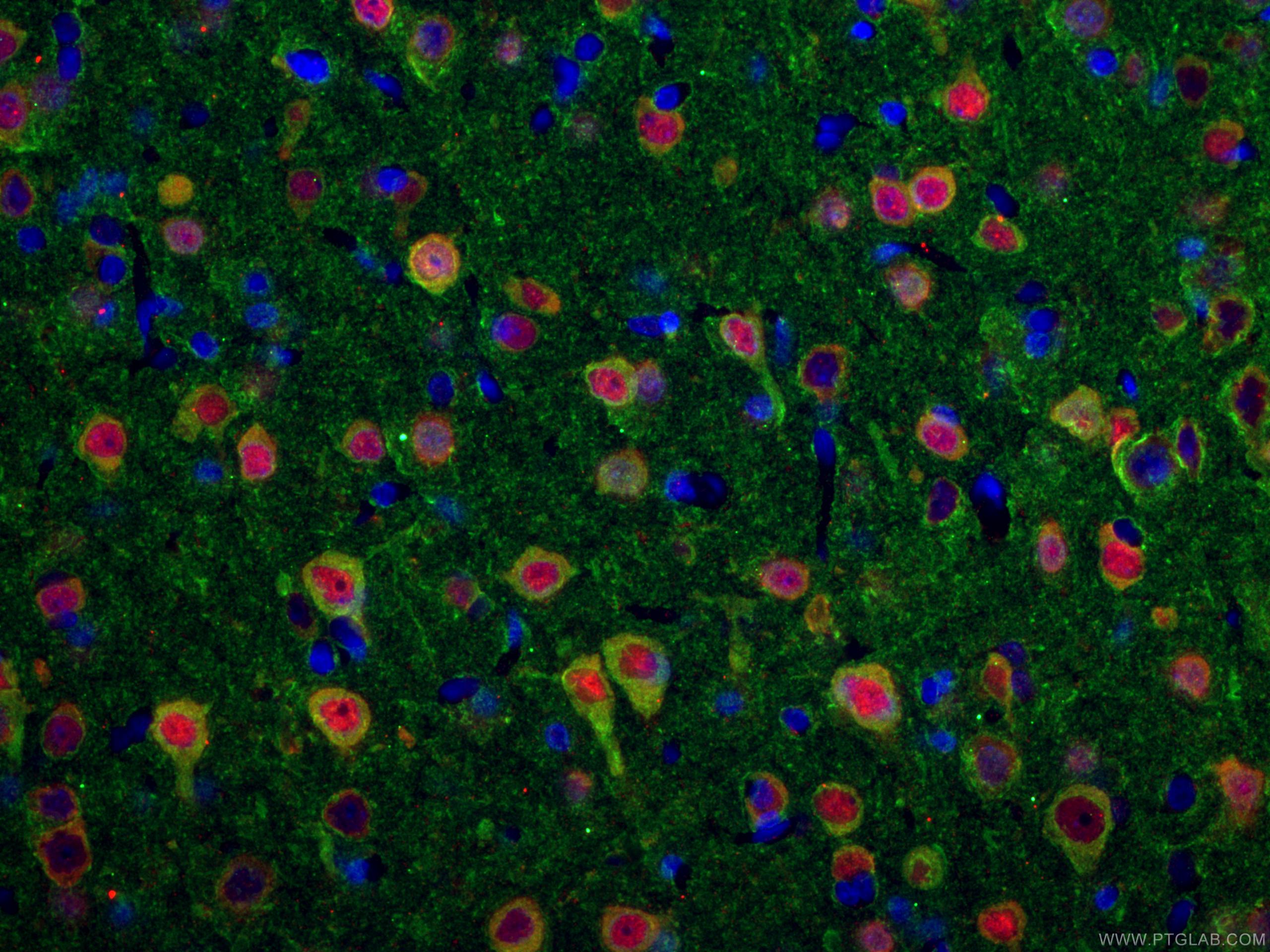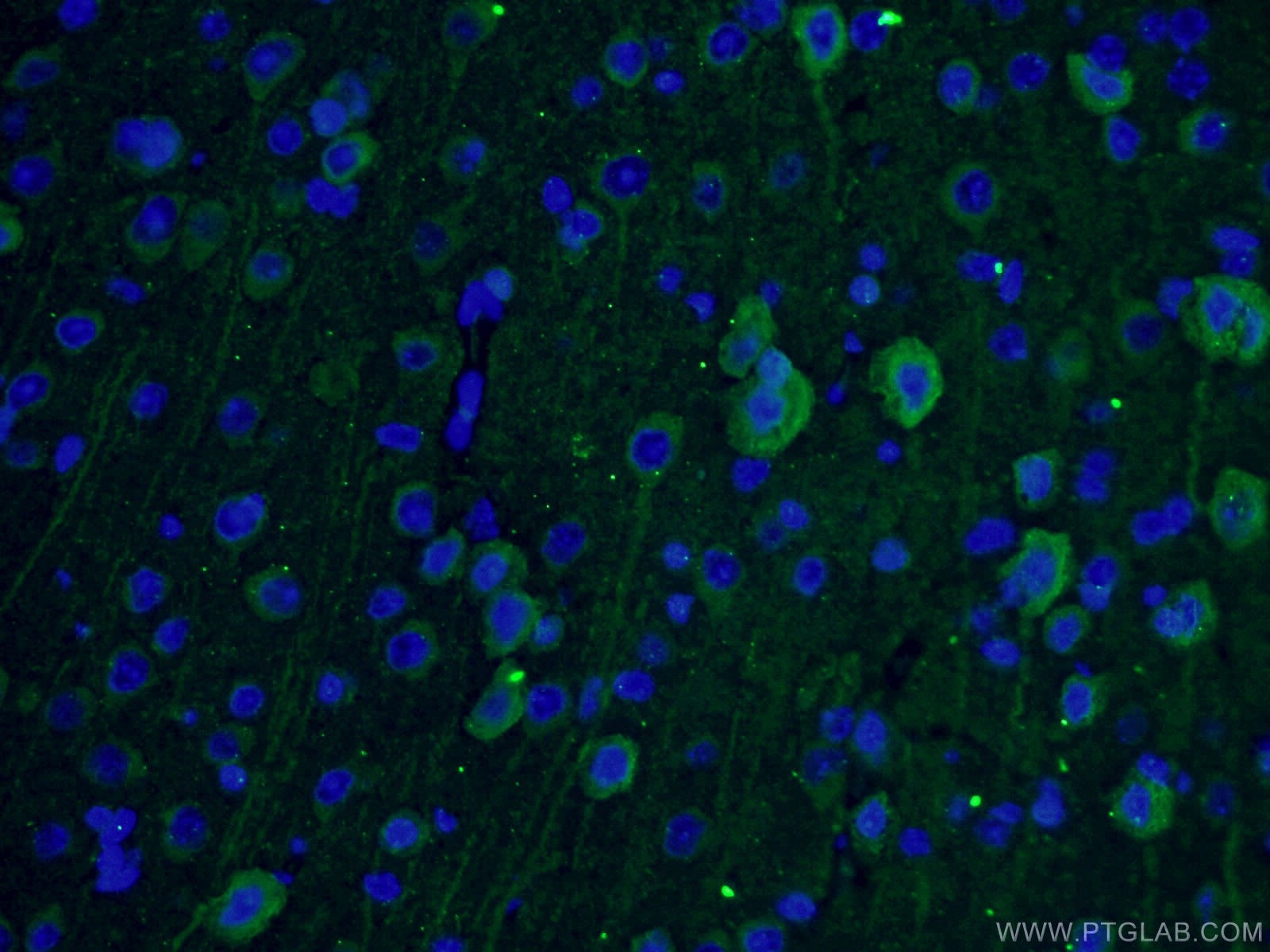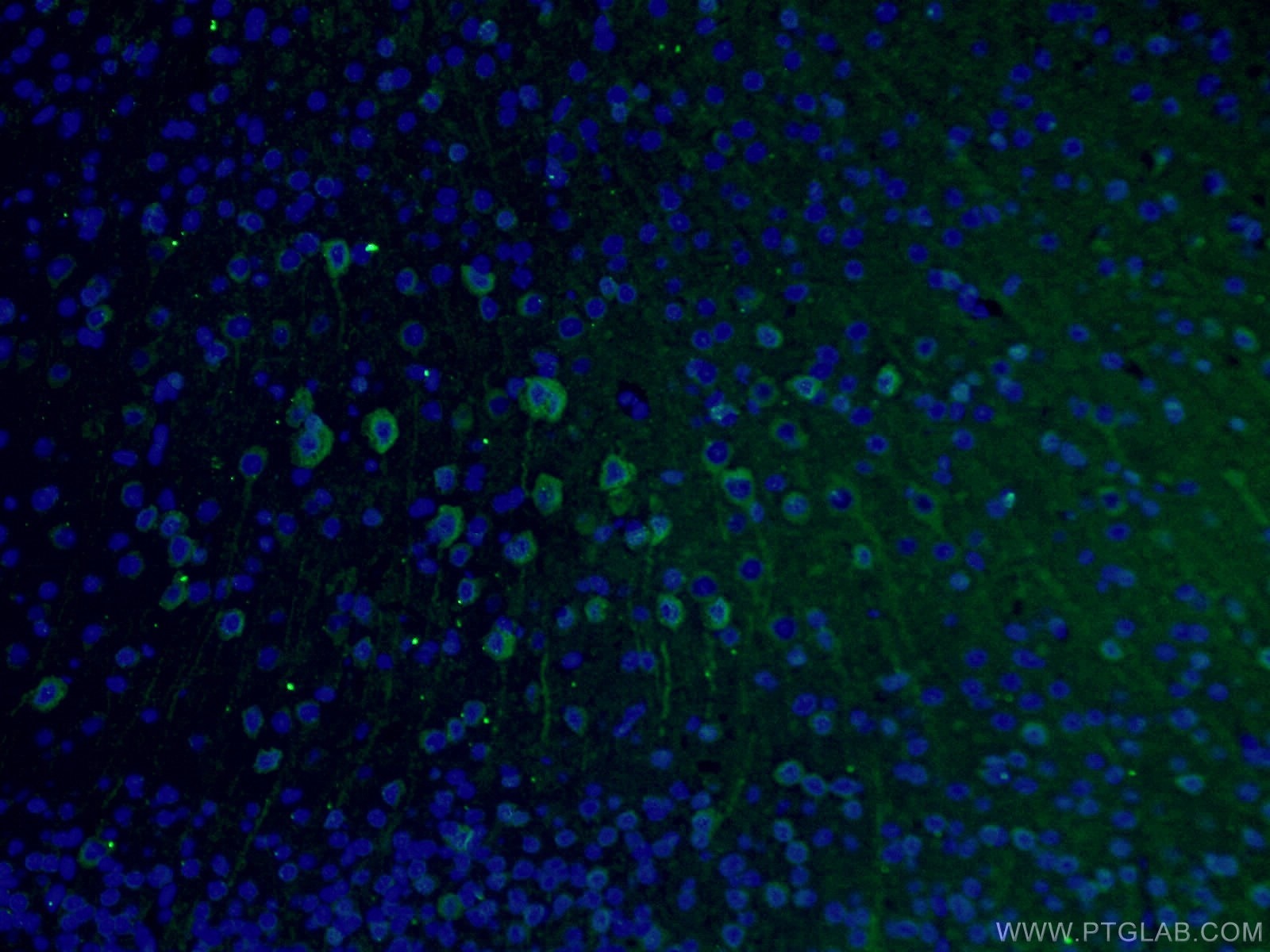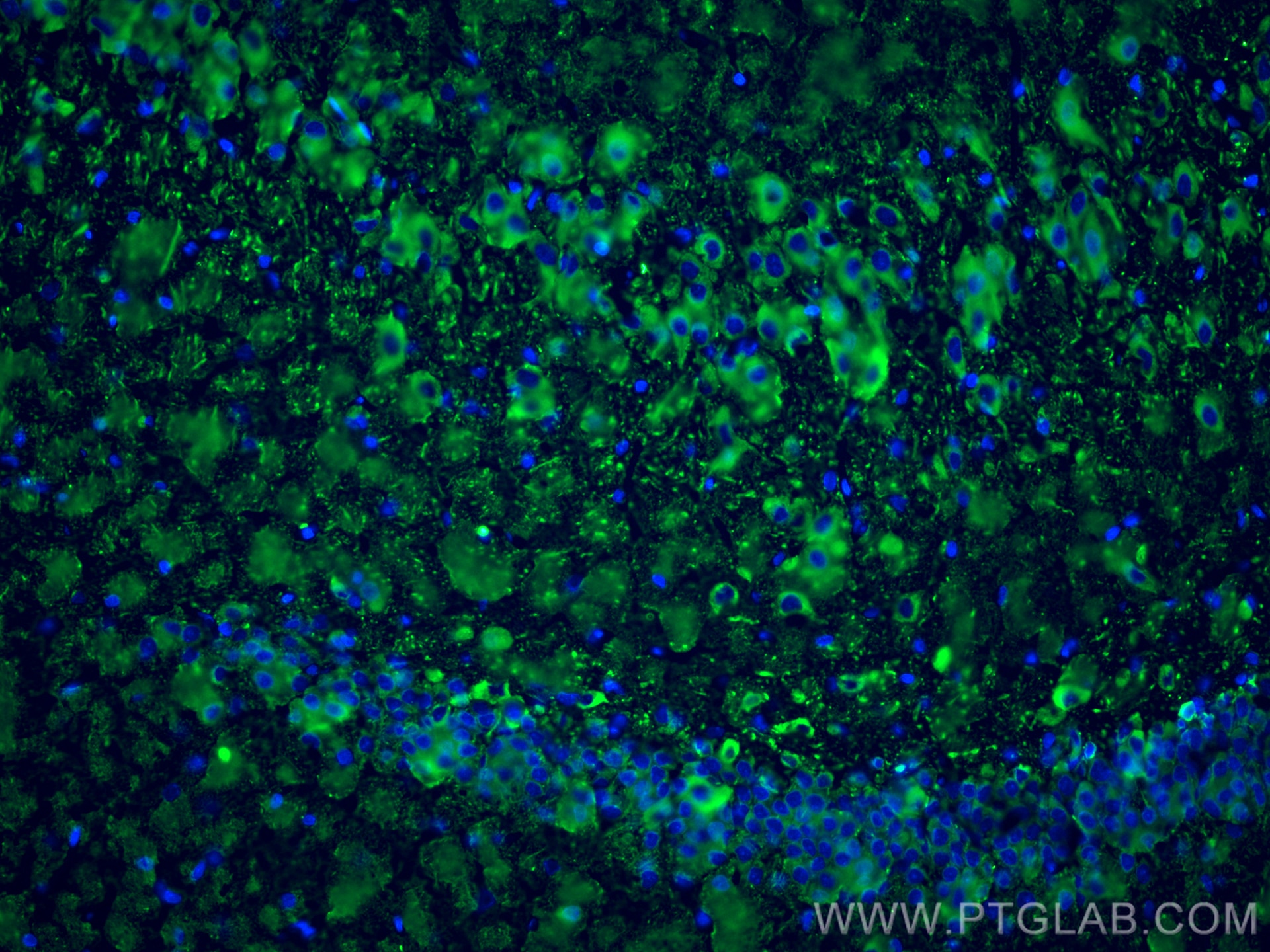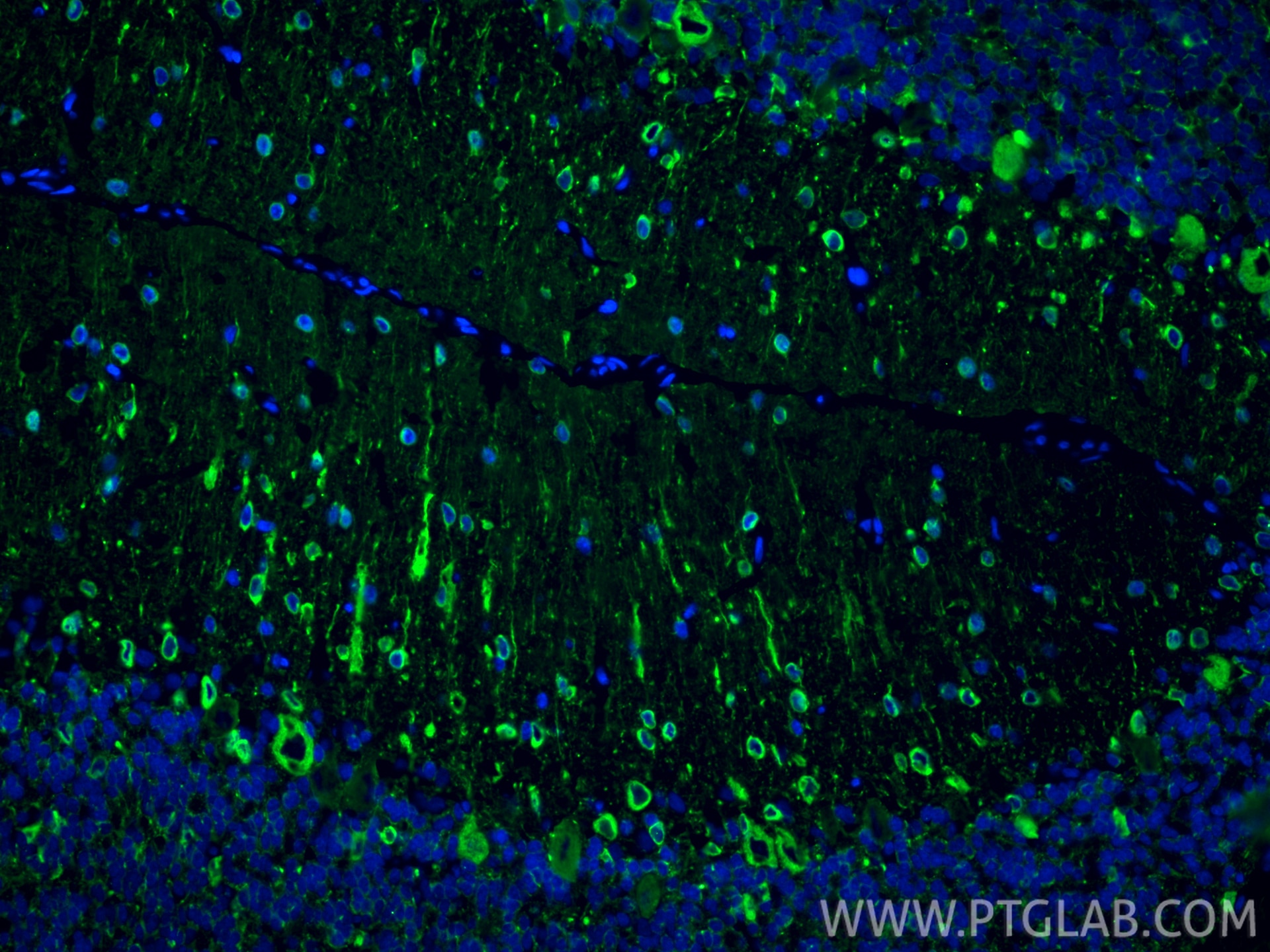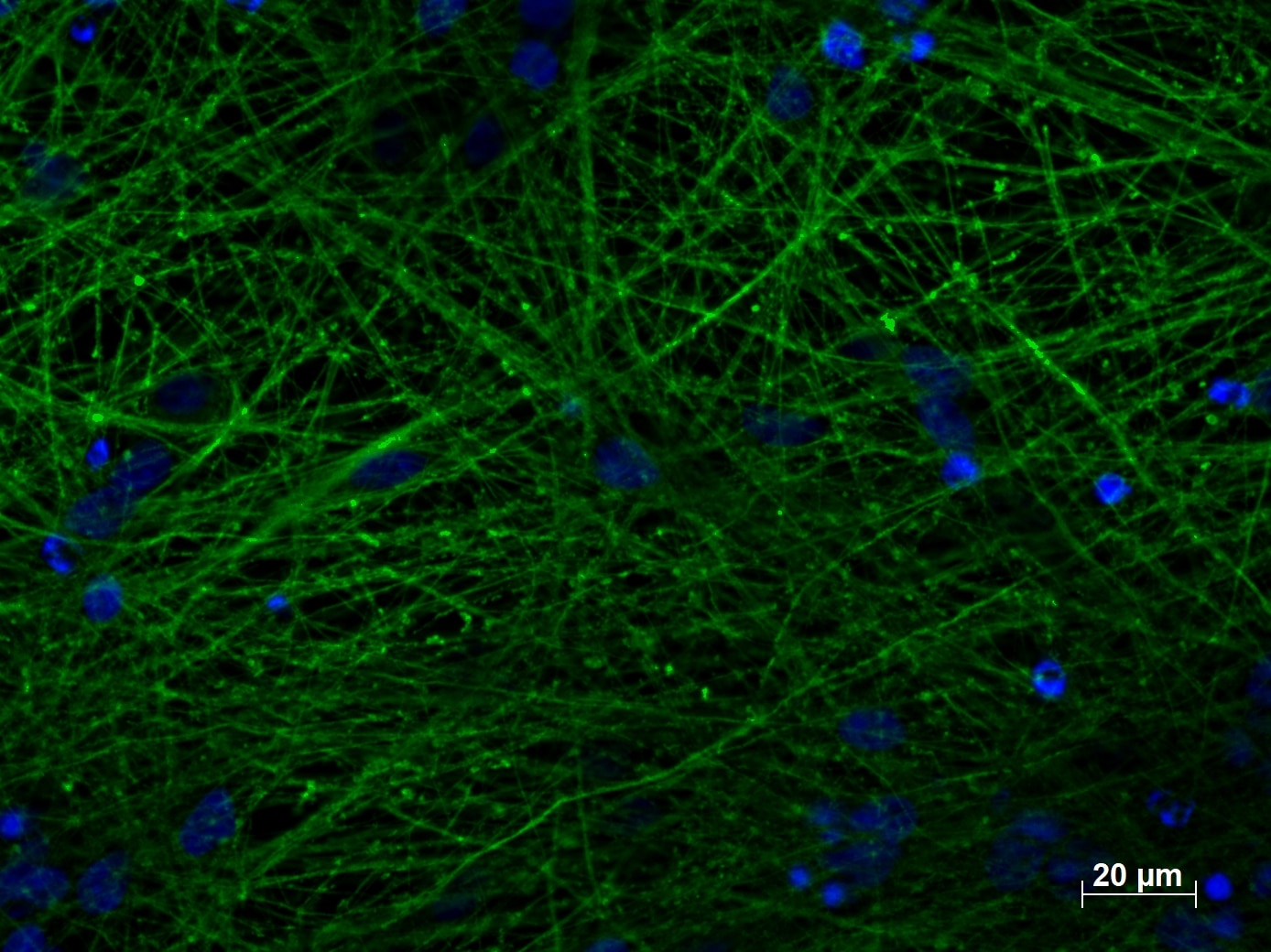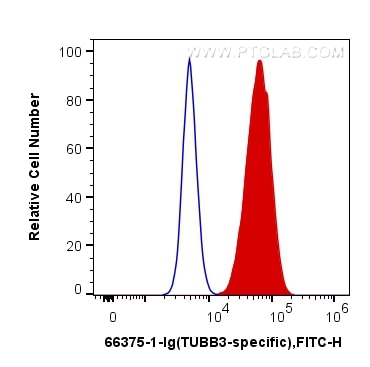Tested Applications
| Positive WB detected in | SH-SY5Y cells, fetal human brain tissue, HEK-293 cells, PC-12 cells, Neuro-2a cells, Pig brain, Rabbit brain, Rat brain Mouse brain, Chicken brain |
| Positive IP detected in | SH-SY5Y cells |
| Positive IHC detected in | human cerebellum tissue, mouse brain tissue, mouse cerebellum tissue Note: suggested antigen retrieval with TE buffer pH 9.0; (*) Alternatively, antigen retrieval may be performed with citrate buffer pH 6.0 |
| Positive IF-P detected in | rat brain tissue, Retinal organoids, mouse brain tissue, human neuron |
| Positive IF-Fro detected in | rat brain tissue, rat cerebellum tissue |
| Positive IF/ICC detected in | iPS cells |
| Positive FC (Intra) detected in | SH-SY5Y cells |
Recommended dilution
| Application | Dilution |
|---|---|
| Western Blot (WB) | WB : 1:5000-1:50000 |
| Immunoprecipitation (IP) | IP : 0.5-4.0 ug for 1.0-3.0 mg of total protein lysate |
| Immunohistochemistry (IHC) | IHC : 1:400-1:20000 |
| Immunofluorescence (IF)-P | IF-P : 1:50-1:500 |
| Immunofluorescence (IF)-FRO | IF-FRO : 1:400-1:1600 |
| Immunofluorescence (IF)/ICC | IF/ICC : 1:125-1:500 |
| Flow Cytometry (FC) (INTRA) | FC (INTRA) : 0.20 ug per 10^6 cells in a 100 µl suspension |
| It is recommended that this reagent should be titrated in each testing system to obtain optimal results. | |
| Sample-dependent, Check data in validation data gallery. | |
Published Applications
| WB | See 27 publications below |
| IHC | See 2 publications below |
| IF | See 70 publications below |
Product Information
66375-1-Ig targets TUBB3-specific/TUJ1 in WB, IHC, IF/ICC, IF-P, IF-Fro, FC (Intra), IP, ELISA applications and shows reactivity with human, mouse, rat, pig, rabbit, chicken samples.
| Tested Reactivity | human, mouse, rat, pig, rabbit, chicken |
| Cited Reactivity | human, mouse, rat, chicken |
| Host / Isotype | Mouse / IgG1 |
| Class | Monoclonal |
| Type | Antibody |
| Immunogen |
Peptide Predict reactive species |
| Full Name | tubulin, beta 3 |
| Calculated Molecular Weight | 55 kDa |
| Observed Molecular Weight | 50-55 kDa |
| GenBank Accession Number | NM_001197181 |
| Gene Symbol | TUBB3 |
| Gene ID (NCBI) | 10381 |
| RRID | AB_2814998 |
| Conjugate | Unconjugated |
| Form | Liquid |
| Purification Method | Protein G purification |
| UNIPROT ID | Q13509 |
| Storage Buffer | PBS with 0.02% sodium azide and 50% glycerol, pH 7.3. |
| Storage Conditions | Store at -20°C. Stable for one year after shipment. Aliquoting is unnecessary for -20oC storage. 20ul sizes contain 0.1% BSA. |
Background Information
TUBB3, the class III β tubulin or Tuj1, is selectively expressed in testis and neurons of the central and peripheral nervous system. It has been widely used as a marker for neurons. Aberrant expression of TUBB3 has also been found in various tumors of non-neural origin and can be used as a biomarker for cancer aggressiveness and a marker for the tendency to respond poorly to chemotherapy. This antibody is specific to TUBB3 but not cross-react with other tubulin isoforms.
Protocols
| Product Specific Protocols | |
|---|---|
| IF protocol for TUBB3-specific/TUJ1 antibody 66375-1-Ig | Download protocol |
| IHC protocol for TUBB3-specific/TUJ1 antibody 66375-1-Ig | Download protocol |
| IP protocol for TUBB3-specific/TUJ1 antibody 66375-1-Ig | Download protocol |
| WB protocol for TUBB3-specific/TUJ1 antibody 66375-1-Ig | Download protocol |
| Standard Protocols | |
|---|---|
| Click here to view our Standard Protocols |
Publications
| Species | Application | Title |
|---|---|---|
Nat Cell Biol RNA-binding proteins mediate the maturation of chromatin topology during differentiation | ||
Neuron Posterior Neocortex-Specific Regulation of Neuronal Migration by CEP85L Identifies Maternal Centriole-Dependent Activation of CDK5. | ||
Redox Biol LOX-mediated ECM mechanical stress induces Piezo1 activation in hypoxic-ischemic brain damage and identification of novel inhibitor of LOX | ||
Sci Total Environ Ambient NO2 exposure induces migraine in rats: Evidence, mechanisms and interventions. | ||
Mater Today Bio Curcumin-loaded milk-derived sEVs fused with platelet membrane attenuate endothelial senescence and promote spinal cord injury recovery in diabetic mice | ||
Mater Today Bio Conjugated therapy with coaxially printed neural stem cell-laden microfibers and umbilical cord mesenchymal stem cell derived exosomes on complete transactional spinal cord defects |
Reviews
The reviews below have been submitted by verified Proteintech customers who received an incentive for providing their feedback.
FH Ankush (Verified Customer) (05-02-2025) | worked fine
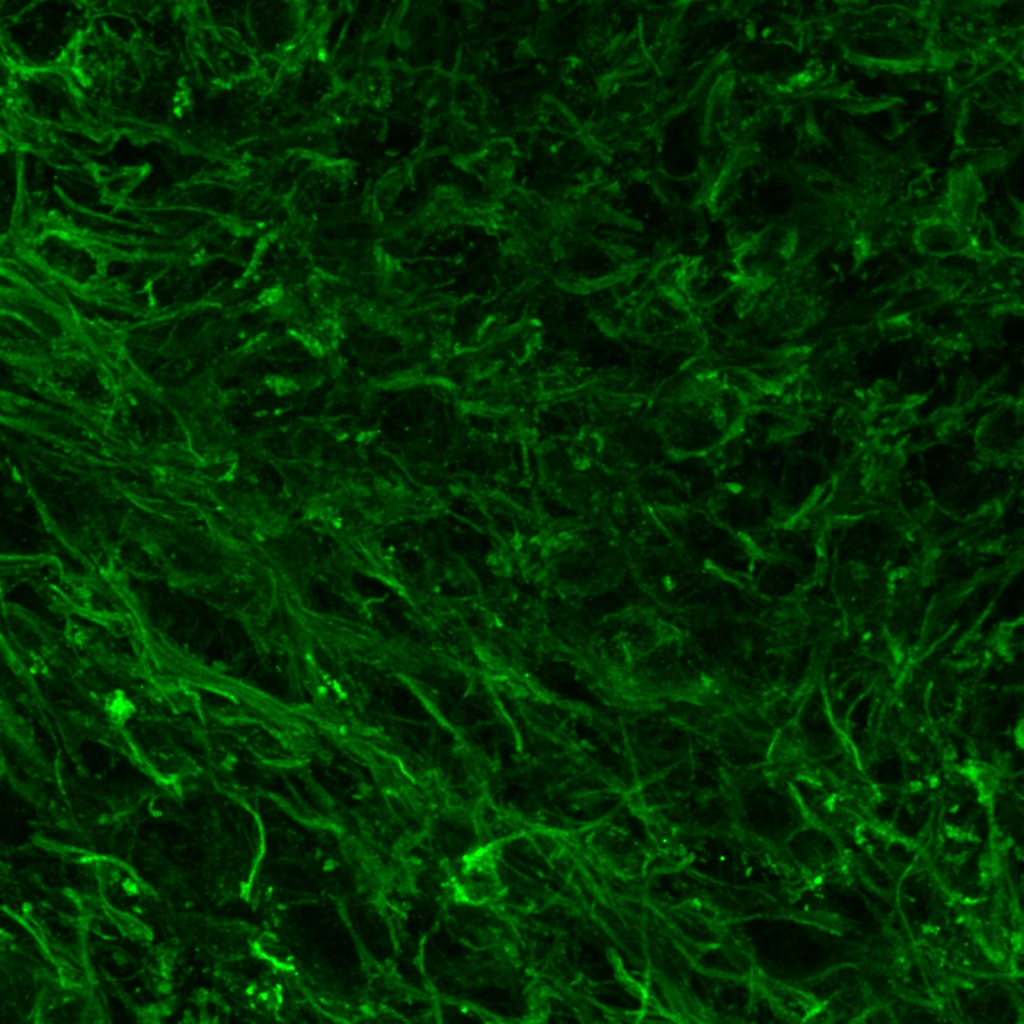 |
FH Gabriele (Verified Customer) (01-12-2023) | The antibody works very well with our IF protocol. Maybe the dilution could be pushed to 1:500-1:600. TUBB3 1:400 (green), Hoechst (Blue)
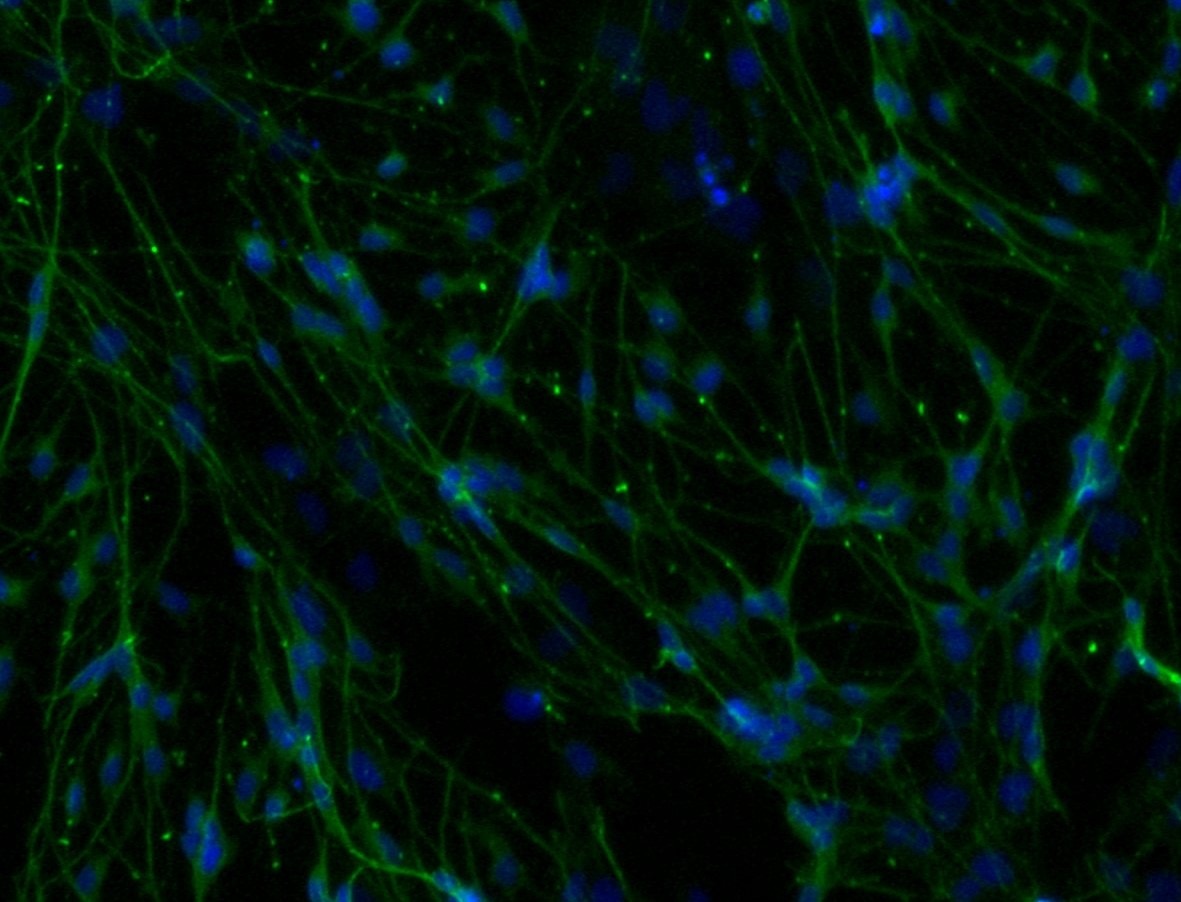 |
FH Alessandro (Verified Customer) (07-27-2022) | No aspecific staining, great outcome
|
FH Josh (Verified Customer) (12-18-2018) | BIII tubulin antibody signal nicely fills neuronal cell bodies and processes with good signal to noise at a reasonable dilution (1:500 in 1% NDS, 0.3% Triton-X, PBS with donkey anti-mouse 647 secondary, 1:500). However, BIII tubulin antibody signal also colocalized with S100 immunoreactive astrocytic processes, though with a lesser intensity. Overall, the antibody is a useful marker of neuronal differentiation when used in combination with other cell-selective antibodies and morphology. Image caption: Differentiated adult hippocampal neural stem cell culture. BIII tubulin 1:500 (purple), S100 1:500 (red), Hoechst (blue). Scale bar = 20 um.
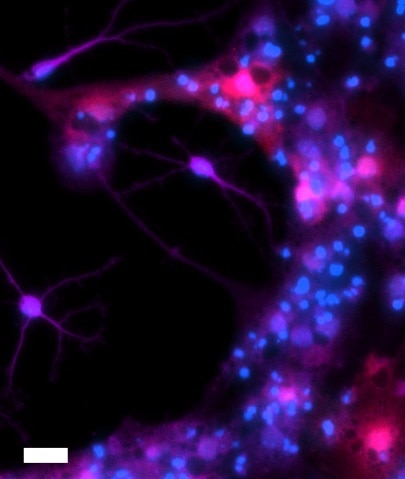 |

